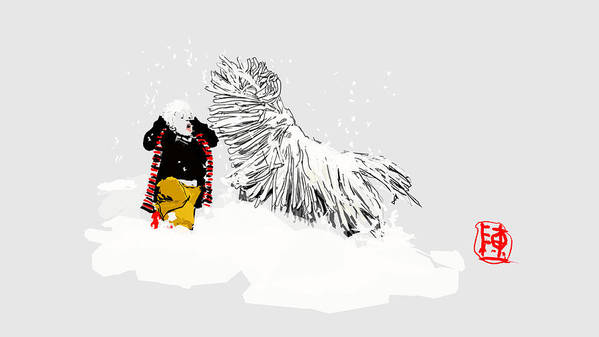
Owning a Canis familiaris pastoralis villosus hungaricus – or Komondor – is a serious responsibility. Exuberant youngsters grow slowly into adults – very big adults – who by nature are protective, territorial and “hard.” Some like to exert their will, but paradoxically, the breed can be sensitive and resentful of harsh discipline. This can be challenging to inexperienced owners (not advised), while experienced Kom people know there are some “hills over which one does not do battle,” especially when it comes to how the dog works. We refer to Janet Vorwald Dohner who writes in her fine book, “Farm Dogs,” that ‘Experienced owners note that each individual Komondor makes his own decision as regards to his guarding style; the owner needs to be prepared to accept it.’
It’s thought that like the Puli, the Komondor descended from Tibetan dogs traveling with the Cuman people originating near the Yellow River, but as Mongols began to expand their territories in the late 900s, the Cuman were forced to move westward. Descendents reached the borders of Hungary in the 1100s when they were granted asylum under Köten Khan. Some believe that the name, “Komondor,” derives from the name, “Koman-dor,” meaning “Cuman dog.” The actual word, “Komondor” was mentioned for the first time in 1544 in a Hungarian codex and has since been declared one of Hungary’s national treasures to be preserved and protected (which is another reason we celebrate National Purebred Dog Day). We may never know with certainty about the Komondor’s background, or any other Hungarian breed because so many records were destroyed during wars and occupations.
Image: Komondor and Child by Debbi Saccomanno Chan is available as fine art, and in home decor and lifestyle items here
